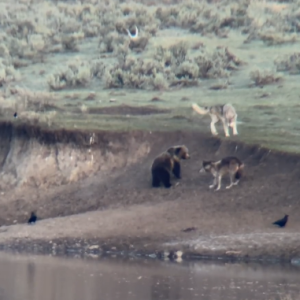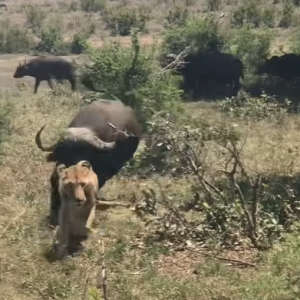Cannibal battles: Whip scorpion turf wars can be deadly
They’ve been called the “scariest animals that will never hurt you”, and the description is fitting. There is something inherently unnerving about tailless whip scorpions, even though these ancient animals are completely harmless to humans. Rival whip scorpions, on the other hand, are not afforded the same kindness – and battles for turf often play out as fierce cannibalistic clashes.

Cannibalism of Phrynus longipes in a cave near Arecibo, Puerto Rico. Image: Chapin et al./Ethology
Neither spider nor scorpion, these creatures (also called whip spiders) belong to the order Amblypygi, a group of arachnids that’s changed very little in the 300 or so million years they’ve been lurking on this planet.
Amplypygids seem to possess a rather inadequate arsenal: they don’t have venom or teeth capable of biting humans, and they lack the stinging tails associated with true scorpions. They’re also almost completely blind. (In fact, the name “amblypygid” roughly translates to “blunt rump” … you win some, you lose some.)
When it comes to fighting rivals for territory, however, it turns out whip spiders can put on quite the show of force – and vanquished contestants sometimes end up on the menu. Most of what we know about this behaviour comes from sporadic observations in the wild, so University of California Davis biologists Dr Kenneth Chapin and Sarah Reed-Guy decided to put these hostile tendencies to the test in the lab: they placed the territorial animals (Phrynus longipes) together and then observed their turf wars to find out who eats whom.
Welcome to the 77th Hunger Games.
Cannibalism among animals is relatively common, but it mostly happens when larger individuals pick off smaller, injured kin, or when adults take out the young of their rivals. In contrast, a whip spider is more likely to get physical if the opponent can hold its own in a fight.
“During interactions, the animals gently rub and prod their competitor to get a sense of who should win the contest, and who should flee,” explains Chapin.
If there’s a clear dominant party, the show of bravado tends to stop there. But things get feistier when a pair can’t tell who’s boss. “They escalate the contest to more dangerous behaviour,” says Chapin. “It’s like a dog that shows his teeth and barks first instead of biting – they’d rather advertise their fighting ability than get into a dangerous fight.”

Those sensory pseudo-legs can reach an impressive 70cm (27 inches)! Image: Kennith J. Chapin
Amplypygids have six “working” legs, and two spindly, modified legs that act like antennae. It’s these antenniform legs that help whip spiders make a fight-or-flight judgement call.
“They can smell, taste, hear, and feel with them, and they might even be able to detect changes in humidity,” notes Chapin. “Imagine being nearly blind, but equipped with a pair of super-human prehensile canes that can sense the world – that’s how whip spiders live.”
When it comes to whip-spider wrestling, it isn’t weight class that matters, but rather the size of an individual’s “claws”: those spiky structures near the mouth are called “pedipalps”, and while they’re typically used to crush prey, they also serve to signal threat displays. Pedipalp size, the researchers found, was the determining factor in the ring – a pair of evenly matched weapons usually resulted in grappling and biting.
Whether or not that brawl ended in cannibalism, on the other hand, depended on the size of the loser’s body. If the fallen whip spider was small enough to make an easy meal, the winner would gobble it up. (Or rather, regurgitate digestive juices on its carcass and slurp up the liquified tissues.)
This is why it may be beneficial for a whip spider to devote extra energy to growing large “claws”, the team suspects. We see this in other animals that advertise their fighting ability, too. Male crayfish are known to allocate energy to claw growth over strength.
It’s the classic bark-vs-bite scenario: if you can trick your opponent into thinking you’re much bigger than you really are, you might scare them off before things turn injurious. Still, this kind of false advertising is a risky manoeuvre – particularly when your adversary would happily snack on your organs (nice chianti optional).
“Lying is similar for humans and whip spiders,” says Chapin. “There are benefits to lying, but you can also get caught. For whip spiders, getting caught means getting eaten. If a whip spider finds herself in a size-matched fight, but ends up being smaller than advertised, she might end up cannibalised.”





